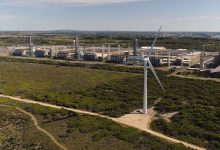Mining Industry in Romania to Focus on Non-Energy Mineral Resources
While the coal industry is heading for winding-up, the exploitation of critical ferrous and non-ferrous materials will become a priority for the Romanian Government in the coming years. The first signal has been given, and several pieces of legislation that will shape the future of the mining industry will soon be on the Executive’s table. We are talking about the draft ‘National Strategy for Non-Energy Mineral Resources 2035’ and the draft amendment to the Mining Law creating the legislative framework for the reopening of closed mines or those in the process of greening.
The demand for mineral resources is projected to increase fivefold over the next five decades, and in this context, Romania aims to develop its resources so that they protect “national economic security interests”, the strategy states. The overall objectives are:
- Harmonisation of the legislative and institutional framework in the field of non-energy mineral resources;
- Responsible exploitation of non-energy mineral resources in the national interest, with a view to the sustainable development of the country;
- Increased funding for industrial research, development, and innovation in non-energy mineral resources.
On the other hand, in order to have as accurate a picture as possible of these reserves, the strategy also proposes to carry out their evaluation, especially as the last operation of this kind took place before 1989. Also, among the novelties brought by the project are the emergence of a Single National Register for Monitoring and Control of reserves and the establishment of the One Stop Shop, which will operate within the National Agency for Mineral Resources (NAMR) as a point of contact with investors/potential investors. It is also proposed to establish a National Council, a consultative body to monitor the implementation of the provisions of this strategy, made up of representatives of civil society interested in the field, namely: representatives of the Romanian Parliament, the Romanian Academy, mining industry employers, employers in the field of construction materials, employers in the field of mineral waters, employers in the geology sector, representative trade unions at national level, as well as universities, national research and development institutes etc. Increasing the efficiency of resource use, developing an integrated mineral resource exploitation chain by setting up processing units, reprocessing and valorising tailings deposited in tailings ponds and waste heaps, or initiating programmes to develop technological performance and rebuild key industrial branches, will all be measures whose implementation should lead to reducing Romania’s dependence on imports of raw materials. Of course, their implementation requires significant financial resources that the government admits it does not currently have, so attracting private investment in this area is a priority.
What will be emphasized
The useful minerals targeted in the strategy are:
- Non-metallic mineral resources: rock salt; industrial minerals, useful rocks and ornamental rocks;
- Metallic mineral resources: polymetallic ores (Cu-Pb-Zn);
- Gold and silver ores;
- Hydro-mineral resources: natural mineral waters, geothermal waters;
- Critical raw materials: rare earths, magnesium, graphite;
- Secondary resources: tailings ponds, waste heaps.
EU struggles to get rid of dependency
The European Union’s (EU) dependency on imports of rare metals ranges between 75% and 100%, depending on the metal. Of the 31 critical materials included by Brussels on the latest list, no less than 19 are predominantly imported from China.
We’re talking about magnesium, rare earths, and bismuth, where China has a near total monopoly, supplying up to 98% of the EU bloc countries’ needs.
The even worse news is that dependency is expected to increase in the future. For example, demand for cobalt alone is expected to increase fivefold by 2030. An even stronger 18-fold increase in demand is expected by 2030 for lithium, and a 60-fold increase by 2050 due to the advance of electric mobility.
Among the 31 types of critical raw materials identified by the European Commission, classified as such because they are exposed to a higher supply risk and have a greater impact on the economy than most other raw materials, the following are present in Romania:
→From the non-metallic resources category: graphite and quartz sands, boron minerals, phosphorites;
→From the category of metal resources: magnesium, bismuth, gallium, germanium, and tellurium, stibium, titanium, wolfram and rare earths (REE).
Pluses and minuses for Romania
The ‘National Strategy for Non-Energy Mineral Resources, 2023-2035’ analyses Romania’s critical resources and rare earth elements and for each lists strengths, weaknesses, opportunities and risks. The strengths point to the existence of exploitable reserves, but the exploitation itself points to the fact that the mines have been closed, it is not known how profitable they will be if they are reopened, the relevant know-how and technology for research and processing have been lost.
SWOT analysis on rare earth resources and other critical raw materials such as Li, Be, Bi, Co, Ga, Sb, Ti, W, barite, bauxite, borates
Strengths:
- There are rare earth mineralisations explored;
- There are historical statistics that reported Bi, Sb, barite, bauxite production;
- There are concentration studies of heavy minerals in alluvial accumulations, such as Ti, Zr, rare earths;
- Some critical raw materials, such as Bi, Sb, Ga, are associated with copper or lead-zinc deposits and can be mined simultaneously with them using the same concentration methods;
- There are current copper mines whose opening and preparation works lend themselves to the application of modern mining technologies;
- There is the possibility of technological concentrations such as: a preparation plant for several deposits;
- The possibility of extracting critical raw materials from mine tailings ponds, waste heaps and other waste dumps at the same time as opening new mines.
Weaknesses:
- The need to build new plants for the extraction of critical raw materials and the accompanying common sulphides;
- Opening or reopening deposits and equipping mines require large investments;
- The profitability of mining depends on the ore grades and accessibility of the main elements such as Cu, Zn, Pb in the deposit;
- Relevant know-how and technology for research and processing have been lost, there is no updated curriculum in the field of education in the context of current needs for critical mineral resources;
- There is no up-to-date database for critical raw materials.
Government regulates reopening of farms
The current Mining Law (Law 85/2003) does not provide for the possibility to re-offer the perimeters with ceased activity before and after completion of closure works. The regime for naturally occurring water from mining sites approved for permanent closure and subject to post-closure monitoring is also not regulated. To this end, the Ministry of Economy has prepared a regulatory act that will allow the reopening of these mines. Therefore, it regulates the reopening of mining sites for which a Government Decision has been issued on the approval of conservation, closure, greening and post-closure monitoring. As a whole, the measure to reopen mines whose activity has been ceased by government decisions partially or totally relieves the Romanian state of the costs of environmental clean-up, with a possible cross-border impact. Expenditure on environmental protection, with the ultimate aim of returning large areas of land to the economic circuit and everything that means socio-economic regeneration of neighbouring communities, landscape reintegration of areas and restoration of biodiversity are transferred to the economic operators that will carry out the exploitation. Regarding the planned changes to the legal regime for fees obtained by concession from the management of areas resulting from the exploitation of salt resources, the present draft does not regulate its value. This value will be subsequently determined by the Ministry of Public Finance together with the competent authority in accordance with this draft ordinance.
Maximum interest in tailings ponds and waste heaps
An important point of the regulatory act prepared by the Ministry of Economy is the reintroduction of tailings ponds and waste heaps into the economic circuit.
“The secondary mineral resources deposited in these locations have a very high potential for industrial valorisation through the recovery of precious, critical and useful base metals (Au, Ag, Cu, Pb, Zn, Fe, Mn, W, Mo etc.) for which mining has been opened or elements that have recently entered the sphere of interest of industrial valorisation (Ge, In, Te, Cd, Sb), through the use of accompanying minerals (quartz, feldspar, clay minerals) or through the use of certain types of tailings as improvers for poor solutions (e.g. in the case of some coal mine heaps),” the Ministry of Economy points out.
Lonea and Lupeni hard coal mines to close
While the Executive is preparing to reopen some mining exploitations that contain special deposits, here things are clear for coal. The coal industry is rapidly heading for winding-up.
The Executive has recently approved state aid to facilitate the closure of the uncompetitive Lonea and Lupeni coal mines of Complexul Energetic Hunedoara, in insolvency, for 2023. According to a government press release, the legislative act provides for state aid of RON 27.242 million for this operation. Of this amount, RON 20.069 million will be allocated to the Lonea mine and RON 7.173 million to the Lupeni mine.
For the two mines, the work to secure the hard coal deposit will be carried out until 31 December 2024, followed by the final closure and land greening works in 2025-2026. Also, given the similar nature of the coal beds at the Vulcan and Livezeni mines, also part of CE Hunedoara, measures similar to those established for the Lonea and Lupeni mines are required.
Since the 1990s, 11 mines have been closed, nine of which have been greened up and two others (Uricani and Paroseni) are in the process of being greened up.






